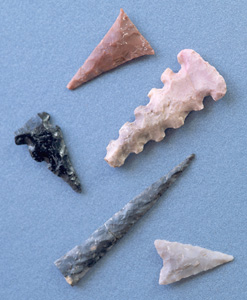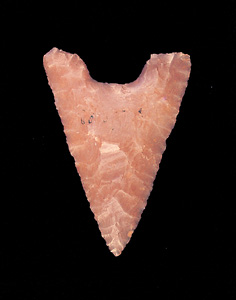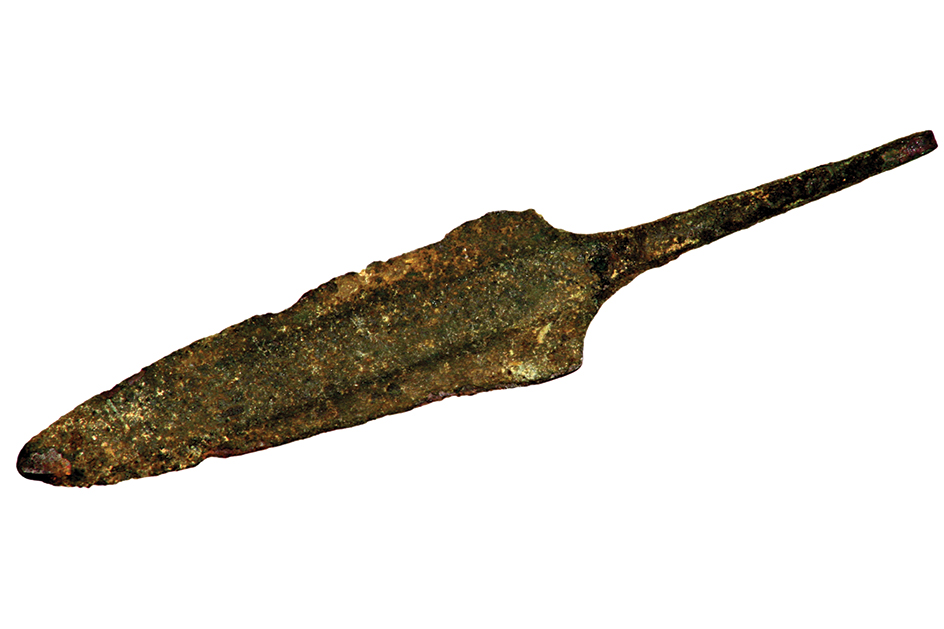Arrowhead is a sharp point on the striking end of an arrow. It is usually a separate piece attached to the arrow shaft. Prehistoric people first made arrowheads of stone or bone, and later of metal. Stone points that may have been arrowheads have been found at sites in southern Africa that are up to 71,000 years old. The oldest bows are from about 6500 B.C., preserved at a prehistoric site in modern-day Denmark. The bow and arrow were invented independently in many regions around the world at different times. Stone arrowheads are especially common in the Americas, where the bow and arrow appeared by about A.D. 500. Older, larger stone points found in the Americas were used as knives or spear points.

Stone arrowheads were made by chipping, or knapping, stones such as flint, chert, obsidian, jasper, chalcedony, and quartz. An arrowhead maker began by breaking a piece off a stone using another stone as a hammer. Holding a suitable piece of stone between the palm and fingers of one hand, the maker then removed small chips from the underside of the arrowhead by pressing with an antler, bone, or ivory tool. A skillful knapper can make an arrowhead in only a few minutes.

Arrowheads differ in size and shape. Most are less than 2 inches (5 centimeters) long. Many are triangular, while others are oval or leaf-shaped. They often have notches for attaching them to the arrow shaft. Archaeologists recognize various types of arrowheads made by Indigenous (native) Americans of different time periods or geographic regions. Stone arrowheads are sharp, but they are not as strong as metal. Indigenous Americans stopped making stone arrowheads after European traders brought iron.

See also Flint.
